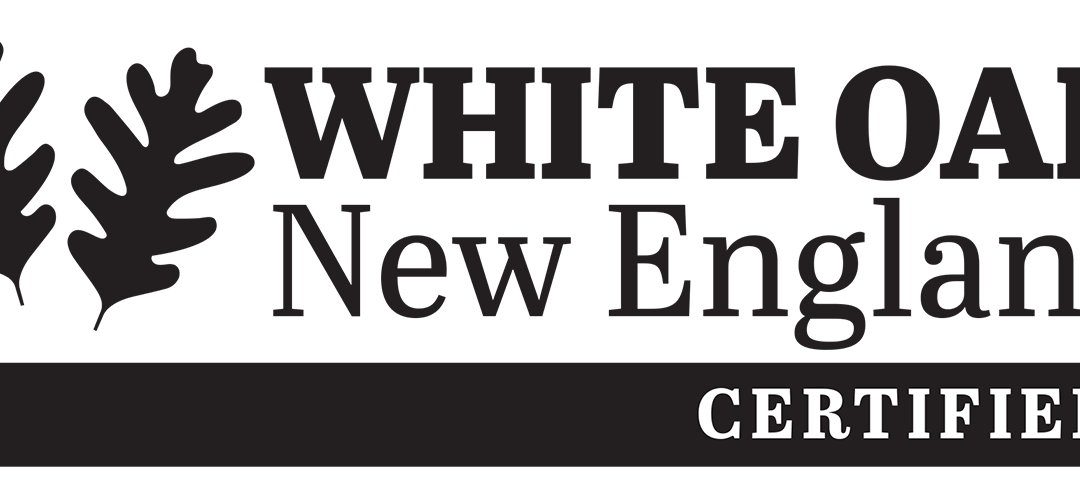Six months ago I noted that UNH was pursuing a unique certification mark for New England’s white oak wood. Well, they got it! Here’s the story from UNH News Service:
The University of New Hampshire has been issued a registered certification mark from the U.S. Patent and Trademark Office to label white oak sourced in New England and market certified New England white oak barrels to beverage producers. This certification mark is the first of its kind for the industry in the United States.
The effort is led by Andy Fast, UNH Extension forest industry specialist, with help from Cheryl Parker, manager of the UNH Brewing Science Laboratory. For several years, Fast has been studying the suitability of white oak grown in New England for use in cask production for the beverage industry.
“A goal of Cooperative Extension is to strengthen the state’s key industries,” said Fast. “We started this project as an out-of-the-box way to increase the demand for local, niche forest products. New England white oak is not currently a source for wood barrels. Introducing this product supports the local forest industry, which is an important part of the region’s economy and identity.”
White oak, typically sourced from the Midwest, is used in barrel construction to flavor and age alcoholic beverages including wine, whiskey, cider and beer. White oak’s native range stretches across much of the eastern and central United States and within this range there is variability in climate, soils and growing conditions. This variability affects the chemical attributes of the wood, including the concentration of lactones and tannins. Different concentrations of lactones and tannins in different kinds of wood can be used by beverage producers to affect a product’s flavor, aroma, color, mouth feel and other characteristics.
Gas chromatography-mass spectrometry analysis was performed on white oak from New England and the results were compared to Midwest white oak. The comparison confirmed that there were discernable differences in the chemical characteristics that could affect the taste of a beverage. Beverage producers can source New England white oak staves or casks if they prefer fewer tannins and more of a specific chemical compound called trans-whiskey-lactone, relative to other sources of American white oak. This is the first known chemical analysis comparing New England white oak to white oak from other regions.
Given the rapidly growing craft distillery and craft brewery industries, particularly in New England, Fast believes that there is a lot of potential in marketing New England white oak barrels in a way that differentiates them from white oak barrels produced in other parts of the country. He is now working on proving the market for certified New England white oak barrels. There are several beverage producers that have already expressed interest in using certified barrels in the production of their products.
Fast is working with New Hampshire based Tamworth Distilling to test the economic feasibility of a scalable model allowing the manufacturing of New England white oak barrels.
“I would like to eventually prove the market for certified New England white oak barrels as viable enough to support increased cask manufacturing in the region,” Fast said. “A revived cooperage industry would have benefits that ripple through the supply chain, from the loggers and sawmills, to the beverage producers, restaurants, breweries and consumers.”
Fast is also researching the viability of barrels produced from alternate hardwood species that are found in New England like beech, red maple and yellow birch.
Manufacturers with an interest in procuring Certified New England White Oak can contact Andy Fast, Extension Forest Industry Specialist at andrew.fast@unh.edu or (603) 841-6544.


 Return to the Concord Monitor
Return to the Concord Monitor